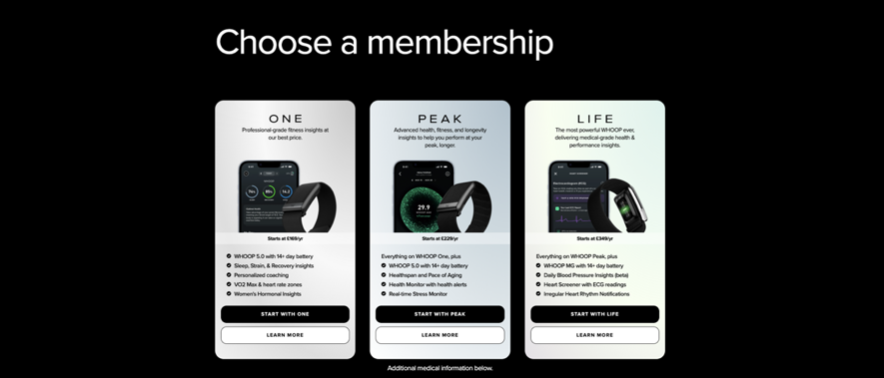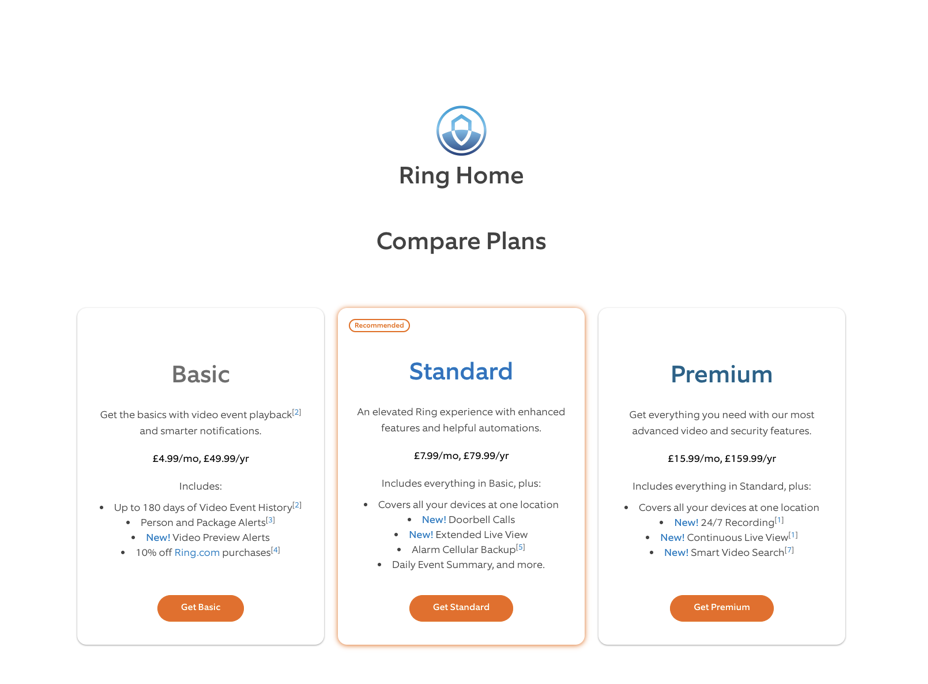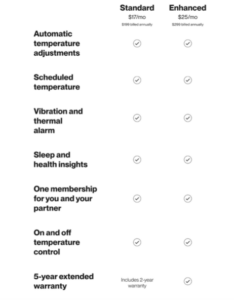Artificial Intelligence is an accelerant for turning even products once considered prime objects for one-time purchases into subscription opportunities.
Hardware, such as gadgets, is such an area.
AI changes the game because it is making it possible to deliver more personalised, always-improving experiences.
In this week’s SubscriptionX article, I explore how gadget makers approach the subscription opportunity, the role of AI in this evolution and the impact on consumers and brands.
The Rise of Subscription-First Hardware
Historically, consumer electronics followed a linear model: build a product, sell it, and (maybe) offer upgrades or support. Brands focused on unit sales, and consumer value was often front-loaded. Once the sale was complete, the relationship mostly ended.
Now, several companies have made the shift to recurring revenue models. These subscriptions are no longer just about “unlocking features,” but now include a layered value proposition, with increasing number of AI-driven features.
Here are three such examples.
WHOOP:
For companies like WHOOP (not the first nor the last!), the hardware is either subsidised or positioned as the gateway to a broader service. For instance, its fitness tracker is free with a monthly subscription that delivers health insights and AI-driven coaching.
WHOOP membership includes a fitness band and a unique set of additional features.

Take the WHOOP Coach, which is powered by Open AI. Here’s a brief description of how it works (for more, read this article on their website):
“WHOOP Coach takes proprietary WHOOP algorithms, a custom-built machine learning model, the latest in performance science and research, and your unique biometric data to identify patterns and connections in your WHOOP data. With OpenAI’s latest technology, WHOOP Coach generates highly individualised, conversational responses to your health, fitness, and wellness questions – all within seconds.”
This level of personalisation serves as a powerful loyalty mechanism, far superior to mere basic add-on features in locking in customers.
AMAZON’s RING:
Another example is Amazon’s Ring.
With a Ring subscription, users can store video footage, receive intelligent alerts, and integrate smart home routines. The base device becomes far more valuable when paired with the subscription, creating a dependency that locks users into the ecosystem.
AI-enabled search is one such service, albeit currently still only in beta.

“With Ring Home Premium, find exactly what you’re looking for with our Ring IQ-powered AI search tool that can identify just about anything in all of your device’s recorded motion events, so you can look up specific things like a red bicycle in the driveway or your cat on the porch. Available in beta for select customers only.”
Read more about all Ring’s subscription features here.
EIGHT SLEEP:
Eight Sleep’s smart mattress covers (“pods”), a “base” that fits between the mattress and bed frame and a “hub” that holds water for cooling or heating.

The system includes biometric, presence and environmental sensors throughout the night to track sleep quality. It says about its membership offer:
“At Eight Sleep, we are constantly working to optimise and improve your sleep experience through software, engineering, R&D, and clinical studies. These updates include (but are not limited to) algorithm updates to increase the Pod’s accuracy – as well as weekly improvements in the app. The membership model allows us to continue investing in the best possible customer experience, and to hire an incredible team of people focused on product improvement and customer support that will make your experience better every day.”
Data and AI play a central role in their offer (they write about it here and here), for example.
- About their Pod and Autopilot: “The Pod is an intelligent sleep system that can be added to any bed. It integrates a network of sensors that continuously monitor vital sleep metrics, including heart rate, breathing rate, heart rate variability (HRV), sleep and wake times, and sleep stages. These data are analysed by sophisticated algorithms to accurately track your sleep patterns. Central to the Pod’s technology is Autopilot, the intelligence behind that Pod, which uses these algorithms to personalise your sleeping environment. One crucial component is our sleep staging algorithm, which assesses your sleep stage every minute. This enables Autopilot to adjust the Pod’s temperature dynamically throughout the night, ensuring each sleep stage is optimally tailored for maximum rest quality.”
- About their Sleep Coach: “We used the 200 billion data points we’ve collected to build the world’s first AI-powered Sleep Coach. It’s a unique feature that analyses and compares your personal sleep information to deliver you tailored recommendations and data points every morning.”
The Thread That Binds (AI + Data + Service Loop)
At the core of all these examples is the flywheel effect of AI + Data + Service. Gadgets become data collection points. AI transforms that data into value. The subscription packages unlock value over time.
In a nutshell:
- It’s no longer about the gadget alone.
- It’s about what the gadget unlocks with time.
The consumer gets a personalised, dynamic experience, and the brand gets deep data insights, recurring revenue, and longer customer relationships. What’s more, this model also reframes product obsolescence. Google Nest, for instance, announced recently that it is ending support for its earliest thermostats. Devices inevitably age out. But when a subscription carries your data, preferences, and usage history, the upgrade path feels less like starting over and more like levelling up. Changing to a competitor feels like hard work. You’re not buying a new product, starting from scratch; you’re continuing a relationship. That continuity makes customers more likely to stay put than shop around.
In this environment, subscriptions are a data goldmine, a strategic asset. Every interaction becomes fuel for AI systems that personalise experiences, improve product iterations, refine audience segmentation, and build stickiness and long-term customer value (CLV).
In the future, as AI becomes more context-aware and embedded in devices, subscription models will shift from passive billing cycles to active value delivery. We’ll move beyond basic access to systems that anticipate needs, coach behaviours, and adapt in real-time.
Whether it’s a home device that adjusts to your routine or a fitness platform that evolves with your goals, the future is in continuous, intelligent engagement. The next wave of successful subscriptions won’t just deliver services—they’ll become invisible, indispensable parts of daily life.
Of course, there are potential challenges to bear in mind, too, e.g.:
- Subscription Fatigue: Users are wary of death-by-a-thousand-charges. The value must be obvious and durable.
- Privacy Pressure: AI needs data, but regulators are circling. Transparency matters.
- Hardware Expectations: Users expect longevity. If services degrade too quickly without payment, brands risk backlash.
Retail and Media Brands: Competing for a habit loop slot
What lessons can retail and media brands take from gadgets?
If you sell a physical product, think about what you could learn about your customer if you had a service layer attached. Could AI help you deliver personalised tips, usage insights, or complementary recommendations? Could the product evolve into a platform?
In beauty and skincare, for example, a brand like L’Oréal is using AI diagnostics to offer tailored product advice and personalised skincare routines through digital tools. You can see how these could be layered into a subscription service that evolve based on the customer’s changing needs.
For media brands, this is about what your platforms could deliver with an AI engine on top of behavioural data. Newsletters that adapt to reading patterns. Podcast playlists tuned to a listener’s schedule. Content alerts tied to mood, interest, or productivity.
It goes beyond competing for attention. It’s about competing for a slot in someone’s habit loop.
Checklist: Can You Adopt a Gadget-Like Subscription Strategy?
- Does your product collect or generate user data?
- Can AI be applied to interpret that data in useful, personalised ways?
- Is there recurring value you can provide based on that interpretation?
- Can you deliver that value in a way that justifies a subscription?
- Would users benefit from a product or service that improves over time (becoming part of their habit loop)?
If you answered yes to most of these, you might have a platform worth building a subscription model on.

Cobus Heyl
Heyl is a Content Partner at Atlas and Founder of That Coalition, a fractional event services and content provider.
Heyl has worked with third-party clients such as Chartbeat, Lineup Systems, and Tubular Labs in Europe and the US, Prospect in the UK, and industry bodies such as PRCA (Communications and Public Affairs) in the UK, MVFP (German Publishers Association) and the Association of Indian Media (AIM).
Subscribe!
Our editor carefully curates two InternetRetailing newsletters a week filled with up-to-date news, analysis and research. In addition to this, there is a dedictaed mailer focusing on the subscription economy with detailed commentary from Heyl every second Wednesday – click here to subscribe to the FREE newsletter.
And why not follow us on LinkedIn to receive the latest updates on our research and analysis.

